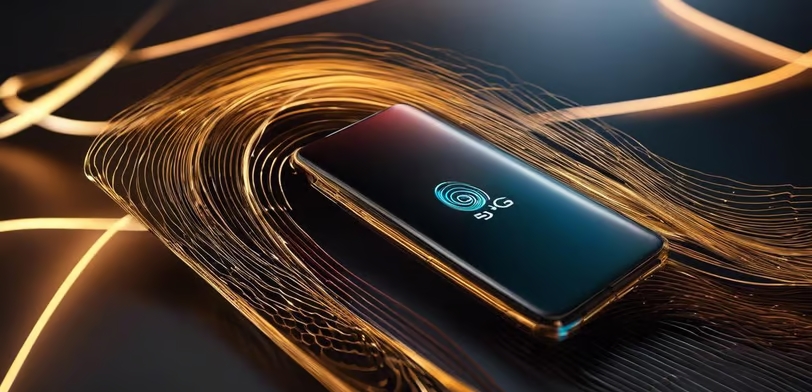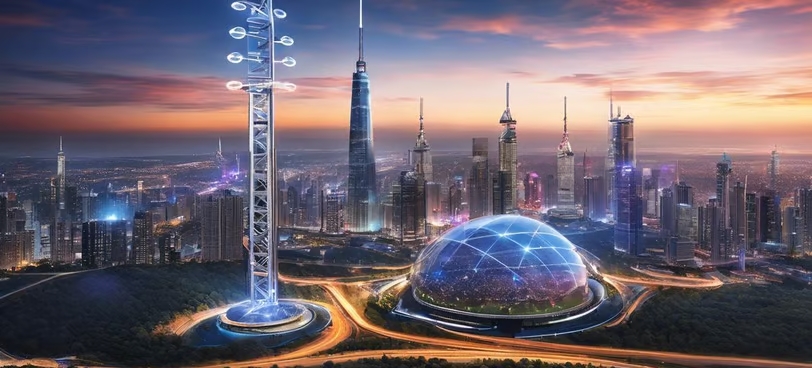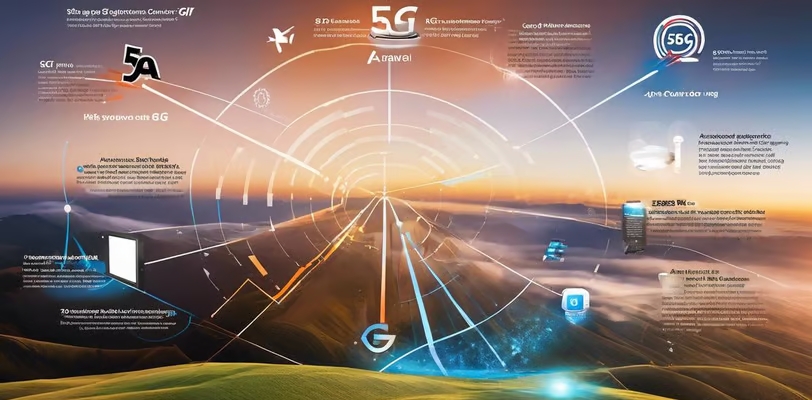As we probe the history and trajectory of private space endeavors, it becomes clear that the sky is no longer the limit — it’s just the beginning.
The dawn of 5G technology marks an unprecedented leap in the capabilities of wireless communication, redefining what is possible in connective infrastructure. As we stand on the brink of this technological revolution, the importance of understanding the innovations driving this change cannot be overstated. At the heart of 5G lies a suite of advanced technologies, each playing a crucial role in delivering the high-speed, low-latency, and large-capacity benefits that will empower a myriad of applications and services. The promise of 5G to reshape industries, transform the Internet of Things (IoT), and revolutionize day-to-day connectivity demands a comprehensive exploration into the core advancements that set this fifth generation of mobile technology apart from its predecessors.
The Technological Innovations of 5G

# How Does 5G Technology Differ from Its Predecessors?
When it comes to the evolution of mobile networks, each new generation brings about a significant leap. And with the rollout of 5G, we’re witnessing a transformation that promises to change how we interact with technology. But what sets 5G apart from the 3G and 4G networks that preceded it? Here’s the lowdown on the latest in tech communication that’s taking the world by storm.
Speed That Leaves 4G in the Dust
Perhaps the most talked-about advantage of 5G is its speed. 5G networks boast data transmission rates that can, under ideal conditions, be up to 100 times faster than 4G. Imagine downloading a full-length movie to your phone in just seconds—welcome to the 5G era.
A Massive Boost in Bandwidth
5G technology also massively increases network capacity. With more bandwidth available, the new networks can handle many more devices at once. This is crucial at a time when not only smartphones, but also home appliances, cars, and even city infrastructures are getting connected.
Latency: Where Every Millisecond Counts
Latency, the time it takes a device to communicate with the network, is drastically reduced in 5G. This means much more responsive internet services. For critical applications like remote surgery or self-driving cars, this near-instantaneous reaction time could be a game changer.
Reliability: Making Connections Solid as a Rock
5G’s reliability represents a significant step up from 4G. With stronger and more consistent connections, dropped calls and spotty service could become things of the past. This reliability is key for businesses and services that can’t afford interruptions.
The Enabler of the Internet of Things (IoT)
With its high speed, low latency, and ability to support a vast web of devices, 5G is poised to take the Internet of Things to the next level. It’s not just about more gadgets online; it’s about creating a seamless and smarter environment where every device works in harmony, driven by 5G’s capabilities.
Power Efficiency: Less Juice, More Use
5G networks are designed to be more power-efficient than their predecessors. This means devices will need less power to stay connected, potentially leading to longer battery life. In an era where power consumption is a concern, this is a major plus.
The Future is Now
5G is not a simple step up; it’s a major leap into a future where technology is increasingly intertwined with every aspect of life. From augmented reality experiences to smart cities, 5G will be at the foundation of the next wave of tech innovations. The interplay of high speed, low latency, and unprecedented connectivity is what sets 5G apart—it’s not just another network; it’s the backbone of a connected world revolution.
5G’s Impact on Industry and IoT
Enhanced Precision and Automation in Manufacturing
The rollout of 5G is set to revolutionize industrial manufacturing. Its robust speed and connectivity mean machines and sensors can communicate almost instantaneously. This increased communication speed is critical for precision manufacturing where timing is everything. Imagine robotic arms on an assembly line that can adjust their actions in real-time to prevent errors. That’s the kind of precision 5G delivers.
Remote Operations and Control
With ultra-low latency, industries that require immediate data exchange can perform tasks remotely. This is huge for sectors like mining, where operating heavy machinery can be dangerous. Using 5G, operators can control excavators and drills from miles away, ensuring safety without sacrificing efficiency.
Smart Warehousing and Inventory Management
In inventory-heavy industries, 5G transforms how warehouses operate. Smart shelves equipped with sensors can track inventory in real-time, and automated guided vehicles (AGVs) transport products swiftly across huge warehouses. This means less waiting, fewer mistakes, and a smoother process from storage to shipment.
Advanced Monitoring and Maintenance
Predictive maintenance gets a big boost from 5G. Sensors on industrial equipment can constantly send data to monitoring systems. When a machine starts acting up, these systems can alert technicians before a breakdown occurs. This proactive approach saves time and money, as issues can be addressed quickly, often without halting the production line.
Augmented Reality (AR) for Training and Repair
AR is tailor-made for hands-on training and guided repairs, and 5G’s low latency ensures AR applications run smoothly. Trainees can overlay diagrams on actual equipment to learn on the job. Technicians can see step-by-step repair instructions through AR glasses, reducing errors and speeding up work.
Health and Safety Enhancements
Safety gets smarter with 5G. Wearable devices can monitor workers’ health metrics, like heart rate and temperature, to prevent heat exhaustion or other health-related incidents. If an accident occurs, 5G-enabled devices send immediate alerts to emergency responders, potentially saving lives.
Supply Chain Optimization
The supply chain becomes more transparent with 5G. Transport vehicles equipped with IoT devices provide real-time tracking data, so companies know exactly where their goods are and when they’ll arrive. This kind of insight enables better planning and can even reduce the environmental impact by streamlining shipping routes and reducing waste.
Emergency Response and Disaster Recovery
In emergency situations, 5G aids in quick, effective responses. Drones connected to 5G can survey disaster areas, sending vital information to first responders. This helps them make informed decisions on where help is most needed, improving rescue efforts and potentially saving more lives.
5G’s role in industrial and IoT applications is a game-changer. Its potent combination of speed, connection density, and reliability pushes the envelope of what’s possible across all sectors. Businesses that leverage 5G’s capabilities can expect leaps in efficiency, quality, and safety, keeping them at the technological forefront.
Security and Privacy Considerations

Moving beyond the numerous advantages that 5G brings to the table, it’s crucial to address the security challenges that come with this cutting-edge technology. As we usher in an era of hyperconnectivity, securing our networks against potential threats is more important than ever.
With 5G, the number of connected devices is skyrocketing, hence multiplying the potential entry points for cyber-attacks. Increased connectivity leads to more data—sensitive information that can be intercepted or manipulated if not properly guarded.
One significant concern is the sheer scale and complexity of 5G networks. They’re decentralized, which means there’s no single point of control. This makes it tougher to ensure consistent security protocols across the entire network. On top of this, the equipment comes from a variety of vendors, raising concerns about supply chain vulnerabilities.
Let’s talk about the solutions. The industry is working on advanced encryption methods. Encryption scrambles data so that even if intercepted, it’s unreadable without the right decryption key. Strong encryption is critical for securing data in transit across a 5G network.
Next is network slicing. This cool feature allows operators to divide a single physical network into multiple virtual networks. This makes it possible to customize slices for specific needs or levels of security. If one slice is compromised, others remain unaffected.
We mustn’t forget the role of AI in securing 5G networks. Artificial intelligence can monitor network activity for irregular patterns that suggest a security breach, all in real-time. Speedy detection can mean the difference between a minor hiccup and a severe data breach.
Another strategy is the zero-trust architecture. Rather than assuming everything inside the network is safe, zero-trust operates on the principle that trust must be earned, regardless of location. This means constant verification of all devices trying to connect to the network.
International cooperation is vital, too. Networks now span the globe, and so do potential threats. Countries and companies need to pull together in setting security standards and sharing information on threats and vulnerabilities.
Lastly, educating users about security risks is a big part of the battle. Strong security policies are only effective if everyone understands and follows them.
To wrap it up, while 5G presents certain security challenges, the tech community is actively engaged in defining and implementing robust security measures. Through encryption, network slicing, AI monitoring, zero-trust policies, and international cooperation, we’re paving the way for a secure 5G future.
The Global Race for 5G Supremacy

The Significance of 5G in Edge Computing and Global Connectivity
5G goes beyond mere speed and reliability; it is essential for the proliferation of edge computing. By processing data closer to the end-user, 5G minimizes the need to send information to distant data centers, thereby cutting down response times even further. This advantage is a game changer for technologies that require immediate data processing, such as autonomous vehicles and advanced robotics. When milliseconds can be the difference between smooth operations and catastrophic failures, 5G’s enablement of edge computing is not just convenient, it’s critical.
Simplified complexities of urban living through 5G are also in the spotlight. Smart traffic systems, efficient public services, and enhanced security measures often hinge on ultra-fast and reliable connectivity. With 5G, public infrastructure becomes more than mere concrete and steel; it evolves into an interactive network that dynamically responds to the community’s needs, optimizing everything from traffic flow to power distribution.
The educational arena is set to ride the 5G wave, transforming the traditional learning environment into an immersive, highly-interactive virtual space. Think real-time collaboration with peers across the globe, holographic lecturers, or lab simulations that feel as real as hands-on experience – these are not distant dreams but imminent revolutions in education.
5G is shaking up the media and entertainment industries, offering experiences that are increasingly immersive. Streaming services can now deliver content in ultra-high definition without breaking a sweat. Virtual and augmented reality experiences are becoming more widespread, providing entertainment and interactive educational content without the lag that once hampered their adoption.
5G’s strategic significance for countries also lies in its potential to level the playing field for rural and remote areas. With enhanced mobile broadband, 5G could bridge the digital divide, encouraging economic growth and access to services often restricted to urban centers.
Finally, the development of 5G is a clear indicator of a nation’s commitment to technological progress and its readiness to foster a fertile environment for innovation. Attracting tech-savvy professionals and companies, nations that prioritize 5G are positioning themselves as leaders in the global digital economy.
The integration of 5G stands as a testament to human ingenuity, marking the realization of what was once thought impossible. The synergy created when people, machines, and services interconnect flawlessly amplifies humanity’s ability to solve complex challenges, redefine experiences, and push the boundaries of what can be achieved. This isn’t just technology for technology’s sake – it’s the foundation of a more connected, efficient, and imaginative future.
Overcoming 5G Deployment Challenges
While the benefits of 5G are numerous and transformative, deploying this cutting-edge technology isn’t without its challenges. A major hurdle is infrastructure investment. Building a 5G network demands significant capital expenditure for new base stations and updated technology capable of handling 5G speeds and features. This is especially critical in rural areas where the return on investment may be less clear. Overcoming this requires innovative funding solutions and public-private partnerships to share the financial burden.
Regulatory issues also slow down 5G rollouts. Ensuring available spectrum and managing the rights to these frequencies are complex processes. Regulators must work efficiently to allocate spectrum and streamline processes for providers to deploy their infrastructure with minimal red tape. Balancing this with community concerns about aesthetics and health related to cell towers is crucial.
Another concern is technological harmonization. Ensuring all 5G equipment and devices are compatible, regardless of the manufacturer, is vital for a seamless network. This requires industry-wide agreement on standards. The telecom industry can tackle this challenge by maintaining open communication channels and thorough testing protocols.
Public skepticism is not to be underestimated, with concerns about health effects and privacy issues related to increased connectivity. Addressing this involves transparent communication and educational campaigns about the safety and benefits of 5G technology.
Finally, in anticipation of the higher energy demands 5G may introduce, providers must consider implementing eco-friendly and sustainable practices. Developing alternative energy sources such as solar-powered stations to power network infrastructure can counteract this concern.
Each of these obstacles calls for a calculated approach combining innovation, collaboration, and education. As tech enthusiasts, the hurdles in 5G deployment represent opportunities to innovate and engineer a better connected, tech-integrated future.
As we canvass the landscape of 5G technology, it becomes evident that the revolution is more than just an upgrade—it is a transformation that will touch every corner of society. The profound implications for industry, security, and global economy showcase the need for a thoughtful and strategic approach to 5G deployment. While embracing the innovations that 5G offers, we must concurrently navigate the complexities of implementing this technology, from rigorous security measures to diplomatic considerations. By addressing these challenges head-on, we pave the way for a future that is not only more connected but also more capable of supporting the diverse needs and aspirations of a world in constant motion.










